Last updated on December 18th, 2024 at 03:19 am
- 1. Understanding Anxiety Attacks
- 2. The Role of Physical Activity
- 2.1 Exercise as a Natural Anxiety Reducer
- 2.2 Implementing an Exercise Routine
- 3. Mindfulness and Meditation Practices
- 3.1 The Science Behind Mindfulness
- 3.2 Incorporating Mindfulness into Daily Life
- 4. The Power of Yoga
- 4.1 Yoga’s Dual Benefits for Mind and Body
- 4.2 Yoga Poses for Anxiety Relief
- 5. The Importance of Quality Sleep
- 5.1 The Sleep-Anxiety Connection
- 5.2 Improving Sleep Hygiene
- 6. Visualization and Relaxation Techniques
- 6.1 The Power of Guided Imagery
- 6.2 Implementing Visualization Techniques
- 7. Nutrition and Anxiety Management
- 7.1 The Gut-Brain Connection
- 7.2 Anxiety-Reducing Foods
- 7.3 Foods and Drinks to Avoid
- 8. Supplementation for Anxiety Management
- 8.1 Potential Beneficial Supplements
- 9. Hydration and Anxiety
- 9.1 The Impact of Dehydration on Mental Health
- 9.2 Hydration Best Practices
- 10. The Importance of Relaxation and Self-Care
- 10.1 Creating a Self-Care Routine
- 10.2 Setting Boundaries
- 11. Cognitive Behavioral Techniques
- 11.1 Understanding Cognitive Distortions
- 11.2 Implementing CBT Techniques
- 12. Building a Support Network
- 12.1 The Importance of Social Connection
- 12.2 Finding Support
- 13. Professional Help and When to Seek It
- Understanding Different Types of Anxiety Disorders
- Unexpected Panic Attacks vs. Panic Disorders
- Physical Symptoms and Sensations During Anxiety Attacks
- Recognizing Emotional and Physical Symptoms of Anxiety Disorders
- Traumatic Event and Its Influence on Anxiety Levels
- Healthcare Provider Role in Managing Anxiety
- Exposure Therapy for Panic Disorder
- Muscle Relaxation Techniques for Physical Sensations
- Lifestyle Changes to Prevent Panic Attacks
- Cognitive Behavioral Therapy for Panic Disorder
- Emotional Symptoms in Social Phobia and Social Situations
- Role of a Primary Care Provider in Anxiety Management
- Herbal Remedies and Supplements for Anxiety
- Art Therapy and Music Therapy for Anxiety Relief
- Support Groups for Panic Disorder and Personal Life
- Techniques to Manage Panic Attacks in Stressful Situations
- Developing a Support System for Anxiety Management
- Setting Boundaries to Reduce Stress
- Acupuncture and Biofeedback for Anxiety Control
- Heart Palpitations and Physical Conditions Related to Anxiety
- Avoiding Substances That Make Anxiety Worse
- Understanding Chronic Condition and Generalized Anxiety Disorder
- Social Anxiety Disorder and Fear of Social Situations
- Addressing Obsessive-Compulsive Disorder (OCD) as a Type of Anxiety Disorder
- Herbal Remedies and Natural Supplements for Anxiety Reduction
- Physical Exercise for Anxiety Relief
- Behavioral Health Treatment Services for Panic-Like Symptoms
- Mental Wellbeing and Techniques for Managing Panic Symptoms
- Cognitive Behaviour Therapy and Fear of Needles
- High-Functioning Anxiety and Everyday Life
- Fear of Fear and Future Attacks
- Anti-Anxiety Medications for Anxiety Management
- Medical Conditions Contributing to Anxiety Symptoms
- Mental Disorders and Their Impact on Quality of Life
- Addressing Panic Attack Symptoms During Stressful Situation
- Compulsive Disorder and Behavioral Therapy
- Meditation to Manage Panic Attacks and Relaxation Methods
- Developing a Personalized Anxiety Management Plan
- Conclusion
- Frequently Asked Questions
- How To Differentiate Between Panic Attacks And Anxiety Attacks?
- What Are Effective Techniques To Manage Panic Attacks?
- How Can Cognitive Behavioral Therapy Help With Panic Disorder?
- Can Diet Impact Anxiety And Panic Attack Frequency?
- How Does Progressive Muscle Relaxation Reduce Anxiety Levels?
- What Are The Best Grounding Techniques For Anxiety Relief?
- How Does Exposure Therapy Work For Panic Disorder?
- Are There Lifestyle Changes To Prevent Future Panic Attacks?
- How Can A Healthcare Provider Help With Anxiety Management?
- Can Deep Breathing Techniques Alleviate Panic Attack Symptoms?
- How Does Regular Exercise Influence Anxiety Levels?
- What Is The Role Of Herbal Remedies In Anxiety Management?
- Can Social Situations Trigger Panic Attacks?
- What Are The Symptoms Of Panic Disorder?
- Can Journaling Help Manage Anxiety And Panic Attacks?
- How Do Anti-Anxiety Medications Help With Panic Attacks?
- What Is The Difference Between Social Phobia And Panic Disorder?
- How Does Mindfulness Reduce Anxiety And Panic Attacks?
- Can Rapid Breathing Make A Panic Attack Worse?
- What Role Does Family History Play In Developing Panic Disorder?
- How Can Avoiding Alcohol Help Prevent Panic Attacks?
Anxiety attacks can be debilitating, interfering with daily life and preventing individuals from reaching their full potential. While professional help is often necessary for severe cases, there are many strategies people can employ to reduce the frequency and intensity of anxiety attacks.
By understanding the nature of anxiety and implementing lifestyle changes, it’s possible to gain more control over these unsettling experiences. Let’s explore practical ways on how to control anxiety attacks, empowering yourself with strategies to stay calm and confident in any situation.
1. Understanding Anxiety Attacks
Anxiety is a normal human response to stress, but for some individuals, it can become overwhelming and disproportionate to the situation at hand. Anxiety attacks, while not officially defined in medical literature, are generally understood as intense episodes of anxiety that can be difficult to manage. These differ from panic attacks, which have specific diagnostic criteria and tend to be more severe.
Symptoms of anxiety attacks may include:
- Rapid heartbeat
- Shortness of breath
- Trembling or shaking
- Sweating
- Feeling of impending doom
- Nausea or stomach discomfort
- Dizziness or lightheadedness
Understanding these symptoms can help individuals recognize the onset of an anxiety attack and take proactive steps to manage it.
2. The Role of Physical Activity
2.1 Exercise as a Natural Anxiety Reducer
Regular physical activity is one of the most effective natural remedies for anxiety. Exercise stimulates the production of endorphins, the body’s natural mood elevators. It also helps reduce stress hormones like cortisol and adrenaline.
Some beneficial forms of exercise for anxiety include:
- Aerobic activities like jogging, swimming, or cycling
- Strength training
- Low-impact exercises like walking or tai chi
- Team sports for social interaction
2.2 Implementing an Exercise Routine
Starting an exercise routine doesn’t have to be daunting. Begin with small, achievable goals and gradually increase intensity and duration. Even a 10-minute walk can provide immediate benefits. Aim for at least 150 minutes of moderate-intensity exercise per week, as recommended by health professionals.
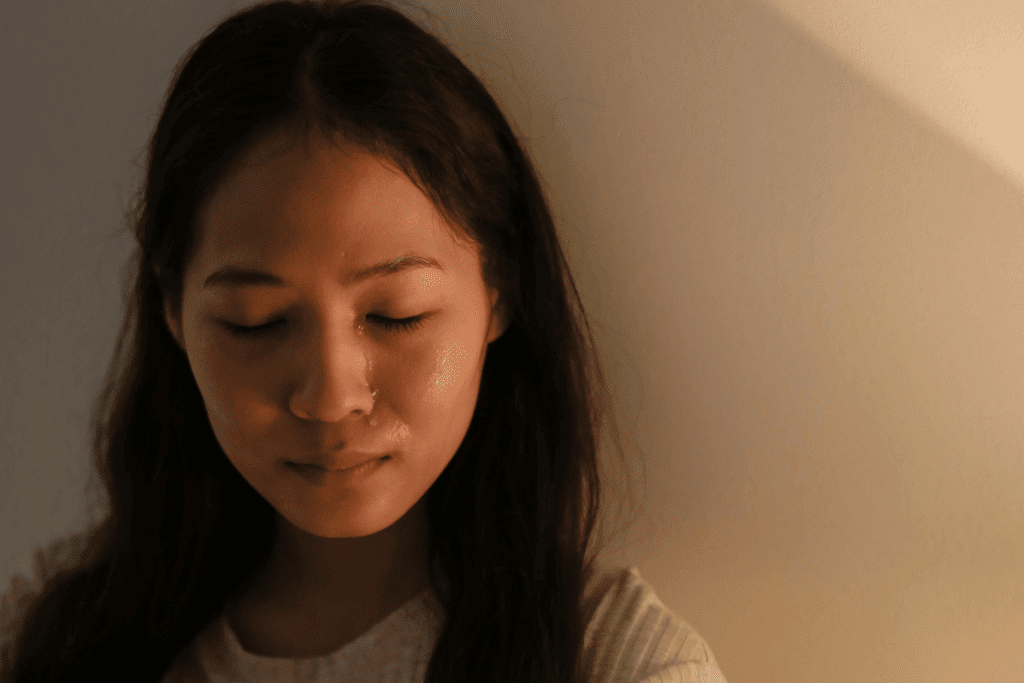

3. Mindfulness and Meditation Practices
3.1 The Science Behind Mindfulness
Mindfulness and meditation have gained significant attention in recent years for their potential to reduce anxiety. These practices work by training the mind to focus on the present moment, rather than dwelling on past regrets or future worries. Neuroimaging studies have shown that regular meditation can actually change brain structure, reducing activity in areas associated with anxiety and increasing activity in regions linked to emotional regulation.
3.2 Incorporating Mindfulness into Daily Life
There are numerous ways to practice mindfulness:
- Guided meditation apps or videos
- Mindful breathing exercises
- Body scan techniques
- Mindful eating
- Gratitude journaling
Start with just a few minutes each day and gradually increase the duration. Consistency is key in reaping the benefits of mindfulness practice.
4. The Power of Yoga
4.1 Yoga’s Dual Benefits for Mind and Body
Yoga combines the physical benefits of exercise with the mental advantages of mindfulness. It encourages a mind-body connection that can be particularly effective in managing anxiety. Different styles of yoga cater to various needs and preferences, from gentle restorative practices to more vigorous vinyasa flows.
4.2 Yoga Poses for Anxiety Relief
Certain yoga poses are particularly beneficial for anxiety relief:
- Child’s Pose (Balasana)
- Cat-Cow Pose (Marjaryasana-Bitilasana)
- Standing Forward Bend (Uttanasana)
- Legs-Up-the-Wall Pose (Viparita Karani)
- Corpse Pose (Savasana)
These poses promote relaxation, deep breathing, and a sense of grounding, all of which can help alleviate anxiety symptoms.
5. The Importance of Quality Sleep
5.1 The Sleep-Anxiety Connection
Sleep and anxiety have a bidirectional relationship. Anxiety can interfere with sleep, and poor sleep can exacerbate anxiety. Addressing sleep issues is crucial in managing anxiety attacks.
5.2 Improving Sleep Hygiene
To improve sleep quality:
- Maintain a consistent sleep schedule
- Create a relaxing bedtime routine
- Limit screen time before bed
- Ensure your bedroom is dark, quiet, and cool
- Avoid caffeine and alcohol close to bedtime
- Consider using white noise or nature sounds to promote relaxation
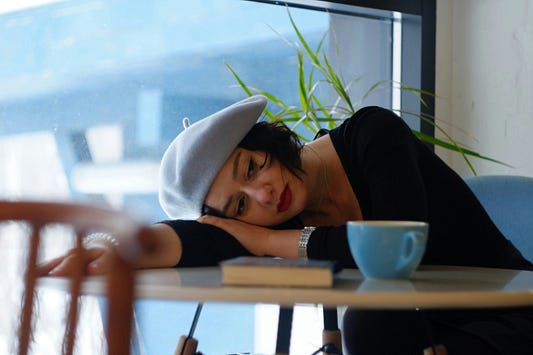

6. Visualization and Relaxation Techniques
6.1 The Power of Guided Imagery
Visualization exercises, also known as guided imagery, can be powerful tools in managing anxiety. These techniques involve creating calming mental images to promote relaxation and reduce stress. Research has shown that regular practice of guided imagery can lead to decreased anxiety levels and improved overall well-being.
6.2 Implementing Visualization Techniques
To practice visualization:
- Find a quiet, comfortable space
- Close your eyes and take several deep breaths
- Imagine a peaceful, safe place in vivid detail
- Engage all your senses in the visualization
- Stay in this imagined place for several minutes
- Slowly return your awareness to the present moment
Regular practice can make it easier to use these techniques during moments of high anxiety.
7. Nutrition and Anxiety Management
7.1 The Gut-Brain Connection
Emerging research suggests a strong connection between gut health and mental well-being. The gut microbiome can influence neurotransmitter production, potentially affecting mood and anxiety levels. A balanced, nutrient-rich diet can support both gut and mental health.
7.2 Anxiety-Reducing Foods
Certain foods may help reduce anxiety:
- Fatty fish rich in omega-3s (salmon, mackerel)
- Probiotic-rich foods (yogurt, kefir, sauerkraut)
- Complex carbohydrates (whole grains, quinoa)
- Magnesium-rich foods (leafy greens, nuts, seeds)
- Antioxidant-rich berries
- Dark chocolate (in moderation)
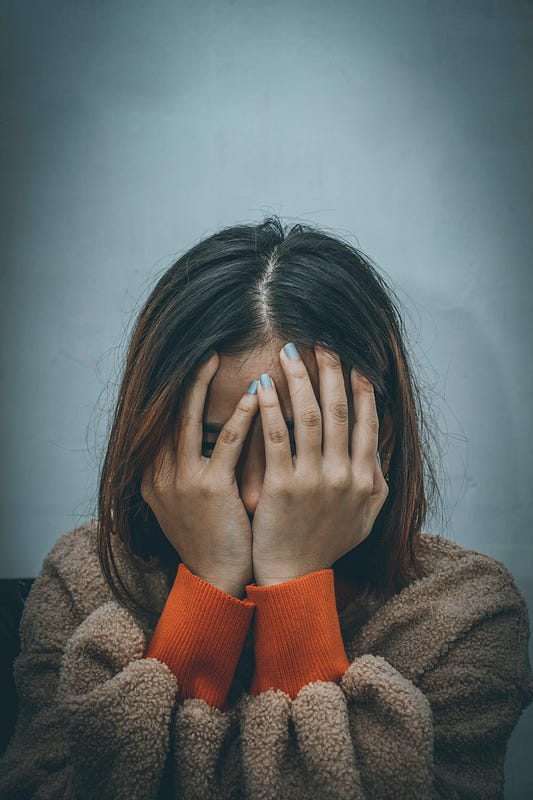

7.3 Foods and Drinks to Avoid
Certain substances can exacerbate anxiety:
- Caffeine
- Alcohol
- Refined sugars
- Artificial additives and preservatives
8. Supplementation for Anxiety Management
8.1 Potential Beneficial Supplements
While a balanced diet should be the primary source of nutrients, some supplements may help manage anxiety:
- Magnesium
- Omega-3 fatty acids
- B-complex vitamins
- L-theanine
- Ashwagandha
It’s crucial to consult with a healthcare provider before starting any new supplement regimen, as some can interact with medications or have side effects.
9. Hydration and Anxiety
9.1 The Impact of Dehydration on Mental Health
Proper hydration is essential for overall health, including mental well-being. Even mild dehydration can affect mood and cognitive function, potentially exacerbating anxiety symptoms. Staying well-hydrated can help maintain emotional balance and reduce the risk of anxiety attacks.
9.2 Hydration Best Practices
To ensure proper hydration:
- Drink water consistently throughout the day
- Monitor urine color (pale yellow indicates good hydration)
- Increase water intake during hot weather or physical activity
- Consider incorporating hydrating foods like fruits and vegetables
- Limit diuretic beverages like caffeine and alcohol
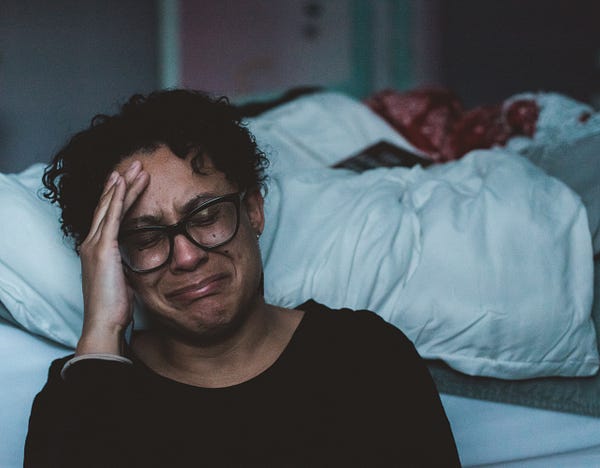

10. The Importance of Relaxation and Self-Care
10.1 Creating a Self-Care Routine
Regular self-care is crucial in managing anxiety. This involves setting aside time for activities that promote relaxation and enjoyment. A self-care routine might include:
- Reading a book
- Taking a warm bath
- Practicing a hobby
- Spending time in nature
- Listening to calming music
- Engaging in creative activities
10.2 Setting Boundaries
Learning to set healthy boundaries is an important aspect of self-care and anxiety management. This might involve:
- Learning to say “no” to unnecessary commitments
- Limiting exposure to negative influences or stressors
- Communicating needs clearly in relationships
- Taking breaks from work or social media
11. Cognitive Behavioral Techniques
11.1 Understanding Cognitive Distortions
Cognitive Behavioral Therapy (CBT) is a highly effective treatment for anxiety disorders. One key aspect of CBT is identifying and challenging cognitive distortions – patterns of thinking that can contribute to anxiety. Common cognitive distortions include:
- Catastrophizing (assuming the worst possible outcome)
- Overgeneralization (applying one negative experience to all situations)
- All-or-nothing thinking
- Mind reading (assuming you know what others are thinking)
11.2 Implementing CBT Techniques
While professional guidance is ideal, some CBT techniques can be practiced independently:
- Thought challenging: Identify anxious thoughts and look for evidence that supports or contradicts them
- Behavioral experiments: Gradually face feared situations to challenge anxious predictions
- Relaxation techniques: Progressive muscle relaxation or deep breathing exercises
- Journaling: Write down anxious thoughts and challenge them on paper
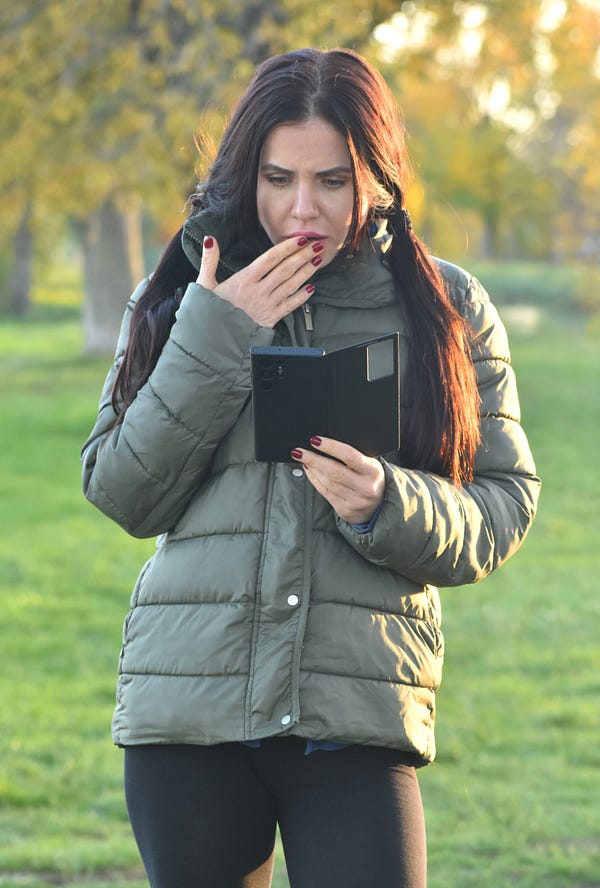

12. Building a Support Network
12.1 The Importance of Social Connection
Strong social connections can be a powerful buffer against anxiety. Sharing concerns with trusted friends or family members can provide emotional support and different perspectives on anxiety-provoking situations.
12.2 Finding Support
Ways to build and maintain a support network include:
- Joining support groups for anxiety
- Participating in community activities or clubs
- Volunteering
- Maintaining regular contact with friends and family
- Considering online support communities
13. Professional Help and When to Seek It
While self-help strategies can be effective for managing mild to moderate anxiety, it’s important to recognize when professional help is needed. Signs that it’s time to seek professional support include:
- Anxiety significantly interferes with daily life
- Self-help strategies aren’t providing relief
- Experiencing frequent, intense anxiety attacks
- Developing unhealthy coping mechanisms (e.g., substance use)
- Experiencing co-occurring mental health issues
Mental health professionals can provide targeted treatments, including therapy and, if necessary, medication, to manage severe or persistent anxiety.
Understanding Different Types of Anxiety Disorders
Anxiety manifests in various forms, each unique in symptoms and triggers. Types of anxiety disorders include generalized anxiety disorder, social anxiety disorder, panic disorders, and separation anxiety disorder.
People with anxiety disorders experience excessive anxiety that can severely disrupt daily life. Understanding the particular type of anxiety disorder can help in determining appropriate treatment.


Unexpected Panic Attacks vs. Panic Disorders
Unexpected panic attacks are intense episodes of overwhelming fear that can occur without any identifiable trigger. In contrast, panic disorders involve recurring unexpected panic attacks and are often linked to specific triggers.
People with panic disorder frequently experience a fear of future panic attacks, making it challenging to engage in everyday situations. Learning to manage these fears is crucial for maintaining a balanced lifestyle.
Physical Symptoms and Sensations During Anxiety Attacks
Panic attack symptoms include physical sensations such as rapid heart rate, rapid breathing, muscle tension, and heart palpitations. These symptoms can make people fear they are experiencing a heart attack, which further exacerbates anxiety levels.
Correct breathing techniques can be crucial in reducing physical symptoms during an anxiety attack. Focusing on controlled breathing helps in managing physical sensations more effectively.
Recognizing Emotional and Physical Symptoms of Anxiety Disorders
Symptoms of anxiety disorders often include both physical and emotional symptoms. Emotional symptoms can involve constant feelings of dread, intense fear, or a pervasive feeling of detachment from personal life.
Physical symptoms include hot flashes, heart palpitations, and racing heart. Identifying these signs helps people with anxiety understand when to seek professional assistance.
Traumatic Event and Its Influence on Anxiety Levels
A traumatic event can significantly impact anxiety levels, leading to mental disorders like post-traumatic stress or panic disorders. A traumatic experience may leave individuals with a biological vulnerability that increases the perception of anxiety.
This increased vulnerability can potentially trigger panic symptoms in future stressful situations. Understanding these connections can aid in the treatment of panic disorder.
Healthcare Provider Role in Managing Anxiety
Consulting a healthcare provider is essential for people with anxiety who struggle with managing their condition independently. Healthcare providers can conduct a thorough medical history review and determine the criteria for panic disorder.
They can also refer individuals to appropriate mental health services. A healthcare team is vital in ensuring access to Behavioral Health Treatment Services.
Exposure Therapy for Panic Disorder
Exposure therapy is a well-researched form of behavioral therapy that is highly effective for people with panic disorder. It gradually exposes individuals to anxiety-inducing situations in a controlled manner.
This helps individuals develop coping mechanisms for anxiety. Through exposure therapy, they learn that panic-like symptoms are not necessarily linked to actual danger.
Muscle Relaxation Techniques for Physical Sensations
Muscle relaxation techniques are a practical part of coping strategies for managing physical sensations during anxiety attacks. These methods focus on reducing muscle tension, which can make panic attacks worse.
Techniques like progressive muscle relaxation for anxiety can ease physical dependence on anxiety responses. These techniques help promote a relaxed state.


Lifestyle Changes to Prevent Panic Attacks
Lifestyle changes can play a significant role in preventing future panic attacks. Engaging in physical exercise, practicing correct breathing techniques, and avoiding caffeine to prevent anxiety attacks can all contribute to reduced anxiety levels.
Maintaining good sleep hygiene and practicing stress management strategies for anxiety can also help stabilize anxiety levels over longer periods of time. Implementing these changes leads to better mental health.
Cognitive Behavioral Therapy for Panic Disorder
Cognitive behavioral therapy (CBT) for panic disorder targets the cognitive distortions that often lead to increased anxiety levels. By challenging these distorted thoughts, CBT helps individuals modify their response to danger.
This allows them to cope better with social situations or periods of time marked by high stress. CBT remains one of the most effective treatment approaches for panic disorders.
Emotional Symptoms in Social Phobia and Social Situations
Social phobia involves an intense feeling of anxiety or fear of being judged in social situations. People with social anxiety disorder often experience a constant perception of anxiety, which can affect their quality of life.
Behavioral therapies and medications for anxiety attack management are effective treatments for reducing emotional symptoms related to social anxiety. Seeking support helps individuals manage their symptoms better.
Role of a Primary Care Provider in Anxiety Management
A primary care provider plays a critical role in helping manage generalized anxiety disorder and other anxiety-related conditions. They can refer individuals to a healthcare professional specializing in mental health conditions.
They can also prescribe anti-anxiety medications as needed. Regular check-ins with a primary care provider are useful in tracking anxiety symptoms.
Herbal Remedies and Supplements for Anxiety
Natural remedies for anxiety attacks include the use of herbal supplements for anxiety, such as herbal products like valerian root or lavender. These natural supplements can help manage anxiety levels.
It’s essential to consult a healthcare provider before incorporating them into treatment plans. This helps avoid interactions with prescription medications.
Art Therapy and Music Therapy for Anxiety Relief
Art therapy for anxiety relief and music therapy to manage anxiety are creative avenues that help individuals express emotions that might be difficult to articulate otherwise. Such therapies contribute positively to mental wellbeing by lowering feelings of fear.
Increasing relaxation through creative activities can significantly reduce anxiety. These are considered effective self-help strategies for anxiety attacks.


Support Groups for Panic Disorder and Personal Life
Joining support groups for panic disorder can provide significant emotional support. It helps build a community of individuals who understand the challenges associated with anxiety.
Discussion forums and real-life stories shared in support groups help normalize the experience of panic symptoms. These resources can enhance personal life by reducing the feeling of isolation.
Techniques to Manage Panic Attacks in Stressful Situations
Relaxation methods for panic attack control, such as grounding techniques for anxiety and visualization exercises for anxiety relief, can be highly effective during a stressful situation. These techniques help redirect attention away from feelings of fear.
Practicing these methods can lead to more calming thoughts. Ultimately, these strategies improve aspects of life affected by frequent panic attacks.
Developing a Support System for Anxiety Management
Developing a support system for anxiety management involves creating connections with trusted individuals. Such networks provide emotional stability during episodes of intense fear.
Family, friends, and health care providers can offer emotional and practical support for people with anxiety disorders. Building resilience is often more effective when individuals have a strong support system.
Setting Boundaries to Reduce Stress
Setting boundaries to reduce stress is vital for people with panic disorder who may become overwhelmed by constant social obligations. Learning to set limits and say no can prevent social situations from triggering episodes of anxiety.
This helps in maintaining a balanced quality of life. It also reduces periods of time where anxiety feels unmanageable.


Acupuncture and Biofeedback for Anxiety Control
Acupuncture for anxiety management and biofeedback for anxiety control are complementary treatments. These methods help people manage their anxiety symptoms more effectively.
They work by balancing the body’s physiological responses. This can mitigate the perception of anxiety sensitivity that often leads to panic attacks.
For further insights on managing anxiety attacks, Harvard Health Publishing provides evidence-based articles that cover a wide range of anxiety treatment approaches. Additionally, resources from the Anxiety and Depression Association of America offer support for understanding types of anxiety disorders and effective management techniques. For community support, consider visiting discussion forums that offer peer guidance. Mayo Clinic provides detailed information on cognitive behavioral therapy for anxiety, and Cleveland Clinic offers resources on health conditions and treatment options related to anxiety.
Heart Palpitations and Physical Conditions Related to Anxiety
Heart palpitations are a common symptom of anxiety and can be mistaken for more severe health conditions like heart attacks. It is essential for people with anxiety to differentiate between panic symptoms and those that may indicate a medical condition.
A healthcare professional can help clarify the symptoms through a proper physical examination and relevant tests. This helps ensure the correct diagnosis.
Avoiding Substances That Make Anxiety Worse
Certain substances, such as alcohol, refined sugars, and caffeine, can exacerbate anxiety symptoms. People with anxiety disorders may benefit from avoiding alcohol to prevent anxiety attacks.
Limiting sugar intake can also help reduce anxiety levels. Reducing the consumption of stimulants helps in managing anxiety more effectively.
Understanding Chronic Condition and Generalized Anxiety Disorder
Generalized anxiety disorder (GAD) is a chronic condition characterized by persistent feelings of anxiety without any specific cause. People with GAD often find their anxiety levels fluctuate but remain constantly elevated.
Proper diagnosis and treatment for GAD by a healthcare provider are crucial for improving overall quality of life. Addressing these symptoms helps in better managing everyday life.
Social Anxiety Disorder and Fear of Social Situations
Social anxiety disorder, also known as social phobia, involves overwhelming fear of being scrutinized in social situations. The constant feelings of anxiety can lead individuals to avoid interactions, significantly impacting their personal life.
Behavioral therapy can be effective in addressing this type of anxiety disorder. Seeking treatment can help improve everyday situations.
Addressing Obsessive-Compulsive Disorder (OCD) as a Type of Anxiety Disorder
Obsessive-compulsive disorder is another type of anxiety disorder that includes recurring unwanted thoughts and repetitive behaviors. These compulsive behaviors often arise as a means to alleviate feelings of anxiety.
Addressing OCD through cognitive behavioral therapy helps individuals challenge irrational fears. Therapy aims to reduce compulsive actions.
Herbal Remedies and Natural Supplements for Anxiety Reduction
Some herbal remedies, such as chamomile and passionflower, have been known to assist in reducing anxiety levels. Herbal products are considered helpful for those looking for natural remedies for anxiety attacks.
However, consultation with a healthcare professional is advised before incorporating them into a daily routine. This helps avoid adverse interactions with prescription medications.
Physical Exercise for Anxiety Relief
Physical exercise can alleviate anxiety by reducing muscle tension and releasing endorphins. Exercise routines to reduce anxiety can include activities like tai chi for anxiety management.
Yoga for anxiety relief and aerobic exercises are also highly beneficial. Engaging in consistent physical activity is a powerful tool for reducing anxiety sensitivity.
Behavioral Health Treatment Services for Panic-Like Symptoms
Behavioral Health Treatment Services are available for individuals experiencing panic-like symptoms that interfere with daily functioning. Treatment may involve a combination of cognitive behavior therapy, exposure therapy, and relaxation methods.
Seeking professional help for panic disorder through such services can provide much-needed support. Accessing these services ensures targeted treatment for symptoms.


Mental Wellbeing and Techniques for Managing Panic Symptoms
Maintaining mental wellbeing involves implementing various techniques to manage panic symptoms. Grounding techniques and deep breathing exercises for anxiety relief are effective tools.
Guided imagery for panic attack control can also help reduce the intensity of anxiety attacks. Implementing these techniques improves overall emotional stability.
Cognitive Behaviour Therapy and Fear of Needles
Cognitive behaviour therapy can also be beneficial for those dealing with a specific fear, such as the fear of needles. By confronting these fears in a controlled environment, CBT can help individuals manage the overwhelming fear.
Anxiety that often accompanies medical procedures can be effectively addressed through gradual exposure. This core component of CBT treatment is highly impactful.
High-Functioning Anxiety and Everyday Life
High-Functioning Anxiety refers to individuals who experience anxiety but still maintain a seemingly successful everyday life. Despite managing daily responsibilities, these individuals often experience a constant underlying perception of anxiety.
Addressing this mental health condition with appropriate coping mechanisms for anxiety can improve aspects of life. Effective strategies lead to improved overall satisfaction.
Fear of Fear and Future Attacks
The fear of fear, or anxiety sensitivity, refers to the heightened response to physical sensations associated with anxiety. Individuals may develop intense fear of experiencing future panic attacks, which can lead to avoidance behaviors.
Understanding triggers of panic attacks is key in reducing this fear. Recognizing that symptoms are not necessarily indicative of an actual danger helps alleviate anxiety.
Anti-Anxiety Medications for Anxiety Management
Anti-anxiety medications can be prescribed by healthcare providers to help manage intense anxiety and panic symptoms. These prescription medications may be used alongside other therapies, such as cognitive behavioral therapy for panic disorder.
It is crucial to follow a healthcare provider’s guidance regarding dosage and potential side effects. Combining treatments ensures a comprehensive approach.
Medical Conditions Contributing to Anxiety Symptoms
Certain medical conditions, such as hyperthyroidism and cardiovascular issues, can contribute to anxiety symptoms. Consulting with a primary care provider is essential for ruling out underlying physical conditions.
A thorough medical history and physical examination are important steps in the diagnosis of panic disorder and other anxiety conditions. Proper evaluation ensures correct treatment.
Mental Disorders and Their Impact on Quality of Life
Anxiety disorders and other mental disorders can have a profound impact on an individual’s quality of life. Excessive anxiety, particularly when left untreated, can impair the ability to carry out routine activities.
Access to mental health services and treatment for panic disorder is essential. Early intervention helps improve quality of life for those affected.
Addressing Panic Attack Symptoms During Stressful Situation
Handling a stressful situation while experiencing panic attack symptoms can be overwhelming. Practicing deep breathing techniques for panic attacks can help individuals regain control over their physical sensations.
Maintaining focus on the present moment is key. Practicing mindfulness practices to reduce anxiety can make highly stressful situations less debilitating.
Compulsive Disorder and Behavioral Therapy
Compulsive disorder often coexists with other anxiety disorders. It involves repetitive behaviors intended to relieve feelings of anxiety.
Behavioral therapy is an effective method for addressing compulsions. It helps individuals understand the underlying causes and challenge irrational beliefs.
Meditation to Manage Panic Attacks and Relaxation Methods
Meditation to manage panic attacks and relaxation methods for panic attack control can play a significant role in reducing the frequency of attacks. Meditation encourages awareness of the present moment.
This awareness can alleviate the fear of future attacks. Incorporating these methods into a daily routine helps maintain lower levels of anxiety.
Developing a Personalized Anxiety Management Plan
Creating a personalized anxiety management plan involves identifying individual triggers, preferred coping mechanisms, and supportive resources. A comprehensive plan may include a combination of medical interventions and mindfulness practices.
Collaborating with healthcare providers can ensure that all aspects of the individual’s anxiety are addressed effectively. A tailored approach leads to better outcomes.
Conclusion
Managing anxiety attacks requires a multifaceted approach that addresses both mind and body. By incorporating regular exercise, mindfulness practices, proper nutrition, and self-care into daily life, individuals can significantly reduce the frequency and intensity of anxiety attacks. Remember that progress may be gradual, and it’s important to be patient and kind to oneself throughout the process.
While these strategies can be highly effective, they are not a substitute for professional help when needed. With persistence and the right combination of techniques, it’s possible to gain control over anxiety and lead a fuller, more relaxed life.
From Embrace Inner Chaos to your inbox
Transform your Chaos into authentic personal growth – sign up for our free weekly newsletter! Stay informed on the latest research advancements covering:
Narcissistic Personality Disorder (NPD)
Frequently Asked Questions
How To Differentiate Between Panic Attacks And Anxiety Attacks?
Panic attacks and anxiety attacks are often used interchangeably, but they are distinct experiences. Panic attacks are typically more intense and come on suddenly, often without any clear trigger.
They involve overwhelming physical symptoms like rapid heart rate, sweating, and a sense of impending doom. In contrast, anxiety attacks are usually associated with a buildup of anxious feelings over time and are linked to specific stressors or worries.
They tend to have less severe physical symptoms and last longer periods of time. The Anxiety and Depression Association of America suggests that understanding these differences can help individuals seek appropriate treatment and learn coping strategies to manage each type of episode effectively.
What Are Effective Techniques To Manage Panic Attacks?
Techniques to manage panic attacks include deep breathing exercises, grounding methods, and progressive muscle relaxation. Deep breathing techniques can help regulate the sudden rapid breathing that often accompanies panic, helping to restore a sense of calm.
Grounding techniques, such as focusing on physical sensations like touch or smell, can redirect attention away from intense fear and physical symptoms. According to Harvard Health Publishing, progressive muscle relaxation can reduce muscle tension, which commonly occurs during an attack, providing a sense of physical and mental relief.
How Can Cognitive Behavioral Therapy Help With Panic Disorder?
Cognitive Behavioral Therapy (CBT) is a highly effective treatment for panic disorder. CBT helps people identify and change thought patterns that lead to anxiety and panic attacks.
By challenging these negative thoughts, people can reduce the intensity and frequency of future panic attacks. CBT often includes exposure therapy, where individuals are gradually exposed to panic-inducing situations to desensitize their fear response.
Mayo Clinic notes that CBT offers practical coping strategies that empower individuals to manage their symptoms in everyday life. This therapeutic approach helps build confidence and resilience in dealing with anxiety.
Can Diet Impact Anxiety And Panic Attack Frequency?
Diet plays a crucial role in managing anxiety and reducing the frequency of panic attacks. Consuming excessive caffeine or sugar can heighten anxiety levels and make people more prone to attacks.
Conversely, maintaining a balanced diet rich in vitamins, magnesium, and omega-3 fatty acids may promote mental wellbeing. Cleveland Clinic advises avoiding stimulants like caffeine and alcohol, which can trigger anxiety, and instead suggests incorporating foods like leafy greens, nuts, and fatty fish to help stabilize mood and reduce panic attack symptoms.
How Does Progressive Muscle Relaxation Reduce Anxiety Levels?
Progressive Muscle Relaxation (PMR) is a technique used to reduce anxiety by systematically tensing and then relaxing different muscle groups. This process helps individuals become more aware of physical sensations and consciously relieve muscle tension.
By practicing PMR regularly, people can lower their baseline levels of anxiety and develop a sense of physical control during moments of heightened stress. According to Johns Hopkins Medicine, PMR can be a powerful tool to use during anxiety attacks, as it targets both the physical and emotional aspects of anxiety.
What Are The Best Grounding Techniques For Anxiety Relief?
Grounding techniques are practical strategies that can help people stay connected to the present moment during anxiety attacks. Some effective methods include the “5-4-3-2-1” technique, which involves naming five things you see, four things you touch, three things you hear, two things you smell, and one thing you taste.
This method is designed to distract the mind from overwhelming feelings. National Institute of Mental Health states that grounding can be particularly helpful for people experiencing symptoms of panic disorders, allowing them to regain control during intense moments.
How Does Exposure Therapy Work For Panic Disorder?
Exposure therapy works by helping individuals gradually face situations that trigger their panic attacks in a safe and controlled way. This approach allows them to confront their fears, reducing the power these triggers have over their mental and emotional state.
Over time, people develop a tolerance to anxiety-provoking stimuli, which results in fewer and less intense panic episodes. American Psychological Association highlights that exposure therapy is effective in treating people with panic disorder by breaking the cycle of avoidance and helping them regain confidence in daily life.
Are There Lifestyle Changes To Prevent Future Panic Attacks?
Several lifestyle changes can help prevent future panic attacks, including regular exercise, proper sleep hygiene, and stress management techniques. Regular physical activity helps release endorphins, which are natural mood boosters, while getting sufficient sleep ensures the body is better equipped to handle stress.
Developing a support network and practicing mindfulness can also be highly beneficial. WebMD suggests that making these changes can significantly reduce the frequency of unexpected panic attacks by creating a healthier foundation for mental wellbeing.
How Can A Healthcare Provider Help With Anxiety Management?
Healthcare providers play a crucial role in diagnosing and managing anxiety. They can conduct a physical examination to rule out any underlying medical conditions that could be causing anxiety symptoms.
Providers may also prescribe anti-anxiety medications or refer patients to behavioral health treatment services, including CBT and other forms of psychotherapy. National Health Service (NHS) mentions that primary care providers are often the first step for people with anxiety disorders, offering both medical interventions and referrals to specialized mental health services.
Can Deep Breathing Techniques Alleviate Panic Attack Symptoms?
Deep breathing techniques are one of the most effective ways to manage the symptoms of a panic attack. By focusing on slow, deep breaths, individuals can counteract the hyperventilation that often accompanies an attack, which can cause dizziness and a racing heart.
Proper breathing helps activate the parasympathetic nervous system, which calms the body and mind. Anxiety Canada points out that practicing these techniques regularly can also help individuals reduce their anxiety levels over time and manage their symptoms more effectively during future attacks.
How Does Regular Exercise Influence Anxiety Levels?
Regular physical exercise has been shown to significantly reduce anxiety levels and help in managing panic disorders. Exercise promotes the release of endorphins, which are chemicals in the brain that improve mood and act as natural painkillers.
It also helps reduce muscle tension and promotes better sleep, both of which are critical for maintaining good mental health. According to Harvard Medical School, individuals who engage in regular physical activities report lower overall levels of anxiety and a reduced occurrence of panic symptoms.
What Is The Role Of Herbal Remedies In Anxiety Management?
Herbal remedies, such as valerian root, passionflower, and chamomile, have been used to help manage anxiety symptoms. These natural remedies are believed to have calming properties, which can help in reducing the intensity of panic attacks and the general feelings of anxiety.
National Center for Complementary and Integrative Health (NCCIH) suggests that while these remedies may be beneficial for some, they should be used under the guidance of a healthcare professional, especially when being combined with prescription medications.
Can Social Situations Trigger Panic Attacks?
Social situations can be a significant trigger for panic attacks, especially for those with social anxiety disorder. The fear of judgment or embarrassment can lead to intense physical symptoms such as rapid heart rate, sweating, and dizziness.
These symptoms can escalate into a full-blown panic attack if the individual perceives the situation as overly threatening. Verywell Mind explains that understanding one’s triggers and developing coping mechanisms, such as gradual exposure and cognitive restructuring, can help people feel more comfortable in social environments and reduce the likelihood of an attack.
What Are The Symptoms Of Panic Disorder?
Panic disorder is characterized by recurrent and unexpected panic attacks, which involve sudden, intense fear and various physical symptoms such as chest pain, rapid heart rate, and shortness of breath. These attacks can occur without any obvious reason, making it difficult for individuals to predict or prevent them.
Cleveland Clinic states that people with panic disorder often live in fear of future attacks, which can severely impact their quality of life and lead to avoidance of situations where they fear an attack might occur.
Can Journaling Help Manage Anxiety And Panic Attacks?
Journaling can be a useful tool for managing anxiety and panic attacks by helping individuals process their thoughts and identify patterns that may contribute to their anxiety. Writing down one’s feelings of anxiety or the details of a panic episode can provide clarity and help individuals develop strategies to cope with their triggers.
Psychology Today mentions that journaling can be an effective part of a broader anxiety management plan, as it promotes mindfulness and emotional regulation, offering insight into one’s mental state.
How Do Anti-Anxiety Medications Help With Panic Attacks?
Anti-anxiety medications, such as benzodiazepines and selective serotonin reuptake inhibitors (SSRIs), can help control the symptoms of panic attacks. These medications work by balancing neurotransmitters in the brain, reducing excessive anxiety and helping individuals feel more relaxed.
However, they are typically used as part of a comprehensive treatment plan, which may also include therapy. WebMD advises that medications should be prescribed by a healthcare professional, as they can have side effects and potential for dependency if not managed properly.
What Is The Difference Between Social Phobia And Panic Disorder?
Social phobia, also known as social anxiety disorder, involves an intense fear of social situations due to concerns about being judged or embarrassed. Panic disorder, on the other hand, is marked by sudden, unexpected panic attacks that can occur at any time, not necessarily in social settings.
People with social phobia might experience panic-like symptoms in social situations, but their anxiety is specifically related to social interactions. National Institute of Mental Health (NIMH) emphasizes that understanding the distinction between these conditions is key to seeking appropriate treatment and improving quality of life.
How Does Mindfulness Reduce Anxiety And Panic Attacks?
Mindfulness practices, such as meditation and mindful breathing, can reduce anxiety and prevent panic attacks by helping individuals stay grounded in the present moment. Mindfulness encourages individuals to observe their thoughts without judgment, reducing the power of anxious thinking.
Regular mindfulness practice can also lower overall levels of anxiety, making it easier to manage stressors when they arise. Mayo Clinic suggests that incorporating mindfulness techniques into one’s daily routine can lead to significant reductions in anxiety and panic symptoms over time.
Can Rapid Breathing Make A Panic Attack Worse?
Rapid breathing, or hyperventilation, is a common symptom of panic attacks and can make the experience worse by increasing feelings of dizziness, chest pain, and disorientation. Hyperventilation leads to a decrease in carbon dioxide levels in the blood, which contributes to these uncomfortable physical sensations.
Better Health Channel advises practicing slow, deep breathing techniques to counteract hyperventilation and help regain a sense of control during a panic episode.
What Role Does Family History Play In Developing Panic Disorder?
Family history is a significant factor in determining one’s likelihood of developing panic disorder. Studies suggest that individuals with a close relative who has experienced panic attacks or other anxiety disorders are at a higher risk of developing similar conditions.
This increased risk may be due to genetic factors that influence how the brain processes anxiety and fear. National Alliance on Mental Illness (NAMI) explains that understanding one’s family history can be helpful in seeking early intervention and treatment, potentially preventing the development of chronic panic symptoms.
How Can Avoiding Alcohol Help Prevent Panic Attacks?
Avoiding alcohol can help reduce the risk of panic attacks, as alcohol acts as a depressant and can disrupt the balance of neurotransmitters that regulate mood and anxiety levels. Alcohol can initially seem calming, but it ultimately contributes to increased anxiety levels and the likelihood of experiencing panic attacks.
Particularly the day after consumption, withdrawal effects can kick in and exacerbate anxiety. American Addiction Centers recommends avoiding alcohol, especially for those prone to anxiety, as it can interfere with treatment efforts and exacerbate symptoms of panic disorder.




